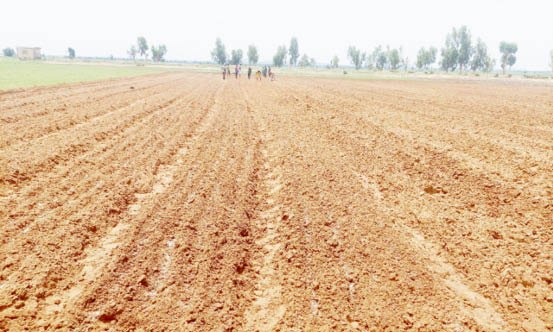AGRO SOLUTIONS: 4 visible signs your field’s sending you SOS – save our soil
Is your soil sending you an SOS? If you don’t know the signs, you could miss physical, chemical, and biological indicators of soil issues. Healthy soils store water, resist erosion, sequester carbon, cycle nutrients, reduce externalities, and improve profitability. Unhealthy soils can negatively impact yield potential – don’t ignore the signs! Little to no soil […]

Field prepared for planting
Is your soil sending you an SOS? If you don’t know the signs, you could miss physical, chemical, and biological indicators of soil issues.
Healthy soils store water, resist erosion, sequester carbon, cycle nutrients, reduce externalities, and improve profitability.
Unhealthy soils can negatively impact yield potential – don’t ignore the signs!
Little to no soil structure
If you notice that wind or water significantly moves your soil, you may have an erosion problem.
- Fraud investigation institute partners ANAN College on professionalism
- Some western news items are sinophobia
Active microbes help bind soil together – bacteria by secreting a glue-like substance called extracellular polysaccharides, and fungi by weaving soil particles together with their net-like extensions called hyphae. As the microbes bind more soil together, they form aggregates, which improve soil structure.
Improved soil structure and aggregation are what give soil the desired property of excellent water-holding capacity and crop productivity.
Hard soil structure
The physical composition of soil should have aggregates that clump together, but crumble easily under finger pressure. If you need a hammer to break clumps apart, you may have a compaction problem.
Your roots can also signal compaction. Healthy root systems have uninhibited growth, lots of fine roots, and grow horizontally and vertically. Unhealthy root systems have restricted growth with short, thick primary roots, few fine roots, and sometimes only grow horizontally.
Soil compaction can be from working wet soil, deflocculation, and heavy machinery passes.
Excess standing water
Waterlogged fields with slow or no water infiltration are also a sign of compaction.
The amount of water your soil can hold is known as the soil’s water-holding capacity. Healthy soils filter and retain water, which crops use. Without aggregates and organic matter, plants suffer. Plus, waterlogged fields can create a salinity problem.
Healthy soil lets water infiltrate the root zone.
Little biological activity and diversity
Your soil is home to micro, macro, and megafauna. Soil biological Integrity is the microbial activity and diversity in the soil.
Some signs of biological activity are visible, like fungi, millipedes, worms, and arthropods in your field. Small fungal “cobwebs”, or hyphae, are a sign of microbial activity. Despite these visible signs, it’s smart to get a soil test to better understand your microbiome and how to support it.
75 per cent of beneficial microbes on farm soils are inactive due to starvation. Consider feeding your soil with manure, compost, and a carbon-rich microbial food.
Soil problems you can’t see
Some problems can only be seen in a soil test. Growers should test soils annually in the same spot, as well as before and after changes in field management practices. Keep a close record and watch for trends.
You can learn the following from soil tests: soil microbe diversity and activity, organic matter chemical composition, active carbon, pH levels, macronutrients and micronutrients and soil protein levels. You need soil health and soil quality to increase crop yield potential
Soil health is the capacity of soil to function as a living ecosystem that sustains all life. Soil quality is how well a soil functions physically, chemically, and biologically and does its “job”. While soil health and quality are closely intertwined, they are not the same. Yet, both are essential for thriving fields, and farms. When you see a sign, don’t ignore the indicators that your soil needs help!
Source: Seed World
